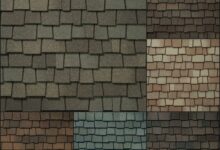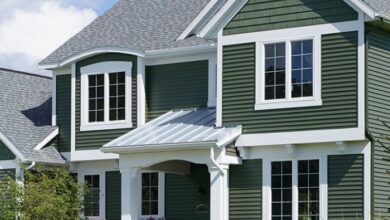Vinyl Siding Cost Per Square Foot A Complete Guide
Vinyl siding cost per square foot isn’t a one-size-fits-all answer. The price you pay depends on a complex interplay of factors, from the quality of the vinyl itself to the intricacy of your home’s design and the prevailing labor rates in your region. Understanding these variables is crucial for accurate budgeting and avoiding costly surprises during your renovation project. This guide breaks down every aspect, empowering you to make informed decisions and find the best value for your investment.
We’ll explore the nuances of material selection, from standard vinyl to premium options, examining how thickness, color, and finish impact both cost and longevity. We’ll also delve into labor costs, offering insights into how contractor rates vary geographically and what constitutes a fair price. Finally, we’ll equip you with a practical, step-by-step approach to estimating your project’s total cost, including often-overlooked hidden expenses. By the end, you’ll be confident in navigating the complexities of vinyl siding pricing and choosing the right solution for your home.
Factors Influencing Vinyl Siding Cost
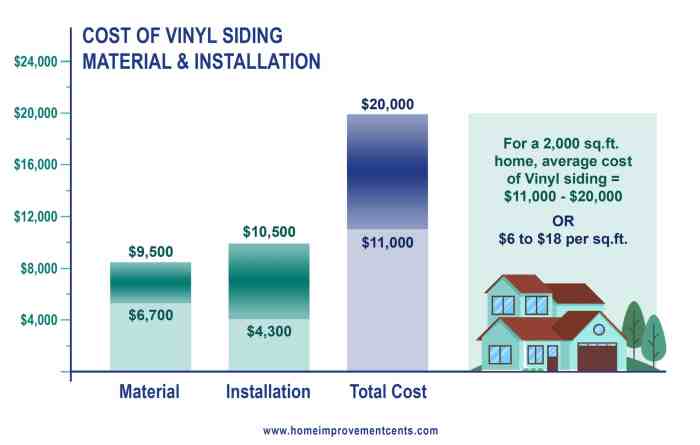
The price of vinyl siding installation isn’t a one-size-fits-all proposition. Several key factors interact to determine the final cost per square foot, significantly impacting your overall project budget. Understanding these variables allows for more accurate budgeting and informed decision-making. This analysis will delve into the primary cost drivers, enabling you to navigate the complexities of vinyl siding pricing with confidence.
Material Quality and Pricing
Vinyl siding quality directly correlates with cost. Higher-end options boast superior durability, thicker profiles, and enhanced UV resistance, translating to a longer lifespan and potentially lower long-term maintenance expenses. Entry-level vinyl siding, while cheaper upfront, might require replacement sooner due to fading, warping, or damage from impact. For example, a basic, single-layer vinyl siding might cost between $1 and $3 per square foot, while premium, multi-layered siding with enhanced features could range from $4 to $8 or more. The thicker the vinyl and the higher the quality of the pigments used, the more you’ll pay. Consider the warranty offered as an indicator of quality and longevity; longer warranties often signal a more robust product.
Labor Costs and Regional Variations
Labor costs represent a significant portion of the overall project expense. Hourly rates for skilled installers vary considerably based on geographical location, demand, and the installer’s experience level. Areas with higher costs of living typically command higher labor rates. For instance, a siding installation project in a major metropolitan area might cost more than a similar project in a rural setting. Furthermore, the complexity of the installation – factors like difficult rooflines or intricate architectural details – will increase labor time and thus, the overall cost. Always obtain multiple quotes from reputable installers to compare labor costs before committing to a project.
Installation Complexity
The intricacy of your home’s design significantly influences installation time and cost. Homes with complex architectural features, such as multiple gables, dormers, or bay windows, require more precise cutting and fitting of the siding, increasing both labor hours and material waste. Additionally, the presence of existing features that need removal or modification before siding installation can add considerable time and expense. For example, removing old clapboard siding before installing new vinyl siding adds significant labor cost. A simple, rectangular home with few obstructions will naturally have a lower installation cost than a multi-story Victorian with elaborate trim and detailing.
Siding Styles and Features: Cost Comparison
The following table illustrates cost variations based on different siding styles and features. These figures are estimates and may vary depending on location, material quality, and labor costs.
| Siding Style | Basic Grade ($/sq ft) | Mid-Grade ($/sq ft) | Premium Grade ($/sq ft) |
|---|---|---|---|
| Clapboard | $2.00 – $3.50 | $3.50 – $5.00 | $5.00 – $7.00 |
| Shake | $3.00 – $4.50 | $4.50 – $6.50 | $6.50 – $8.50 |
| Dutch Lap | $2.50 – $4.00 | $4.00 – $6.00 | $6.00 – $8.00 |
| Vertical | $2.00 – $3.00 | $3.00 – $4.50 | $4.50 – $6.50 |
House Size and Design Impact, Vinyl siding cost per square
The overall square footage of your home is a major determinant of total project cost. A larger house naturally requires more siding material and more labor hours for installation, leading to a proportionally higher overall cost. Beyond square footage, the complexity of your home’s design, as mentioned earlier, significantly impacts the cost. A simple ranch-style home will likely be less expensive to side than a multi-level home with numerous angles and architectural details. For example, a 1500 square foot ranch might cost significantly less than a 2000 square foot two-story home with a complex roofline, even if the square footage difference isn’t substantial.
Cost Estimation and Budgeting
Accurately estimating the cost of your vinyl siding project is crucial for avoiding budget overruns. Understanding the various factors influencing price, from regional variations to material choices and labor costs, will empower you to make informed decisions and ensure a smooth installation process. This section will provide a framework for creating a realistic budget and identifying potential hidden costs.
Regional Vinyl Siding Cost Ranges
Vinyl siding installation costs vary significantly across the United States. Several factors contribute to these regional differences, including labor rates, material availability, and local regulations. For example, areas with a high cost of living, such as the Northeast and West Coast, generally see higher installation costs compared to the South and Midwest. Consider these approximate ranges as a starting point, keeping in mind that actual costs can deviate based on project specifics:
| Region | Cost per Square Foot (Installation Included) |
|---|---|
| Northeast (e.g., New England) | $8 – $15 |
| Southeast (e.g., Florida, Georgia) | $6 – $12 |
| Midwest (e.g., Illinois, Ohio) | $7 – $13 |
| Southwest (e.g., Texas, Arizona) | $7 – $14 |
| West Coast (e.g., California, Oregon) | $9 – $16 |
Note: These ranges represent averages and may not reflect the cost in every city or town within a region.
Estimating Total Vinyl Siding Project Cost
A step-by-step approach is essential for accurate cost estimation. This process allows homeowners to break down the project into manageable components, ensuring no significant expenses are overlooked.
- Measure the square footage of your home’s exterior walls: This is the foundation of your cost calculation. Measure the length and height of each wall section, excluding windows and doors. Add up the total square footage.
- Determine the type and quality of vinyl siding: Prices vary significantly depending on the siding’s thickness, style, and manufacturer. Higher-quality siding often comes with a longer warranty and improved durability, justifying the higher initial cost.
- Obtain multiple contractor bids: Request detailed quotes from at least three reputable contractors. Ensure these quotes include all materials, labor, permits, and waste disposal.
- Factor in additional costs: Include costs for any necessary repairs to the underlying structure, removal of old siding, and landscaping restoration.
- Calculate the total cost: Add up all estimated costs, including materials, labor, permits, and any unforeseen expenses. Add a contingency buffer of 10-15% to account for unexpected issues.
Potential Hidden Costs in Vinyl Siding Installation
Several hidden costs can significantly impact your overall budget. Proactive identification of these potential expenses is crucial for accurate budgeting and avoiding financial surprises.
- Permits and inspections: Local building permits and inspections are mandatory in most areas and can add to the total cost.
- Underlayment or house wrap: This protective layer beneath the siding is often necessary and adds to the material cost.
- Removal of existing siding: If you’re replacing existing siding, the cost of removal and disposal must be factored in.
- Repair of underlying damage: Rotting wood or damaged sheathing may require repairs before siding installation, adding unexpected expenses.
- Landscaping restoration: After installation, some landscaping restoration might be needed.
- Unexpected material costs: Material price fluctuations can impact the final cost, especially for large projects.
Comparing Contractor Bids and Choosing the Best Option
Carefully comparing contractor bids is vital to securing the most cost-effective and reliable service.
Avoid selecting a bid solely based on the lowest price. Consider the contractor’s experience, reputation, warranty offerings, and the level of detail in their quote.
- Compare the scope of work: Ensure all bids include the same services and materials. Look for discrepancies in descriptions and specifications.
- Review contractor references and reviews: Check online reviews and contact previous clients to assess the contractor’s reliability and quality of work.
- Analyze payment terms: Understand the payment schedule and ensure it aligns with the project timeline and your budget.
- Verify insurance and licensing: Confirm the contractor has proper liability insurance and necessary licenses.
- Consider the warranty: A comprehensive warranty provides peace of mind and protection against potential issues.
Material Selection and Pricing
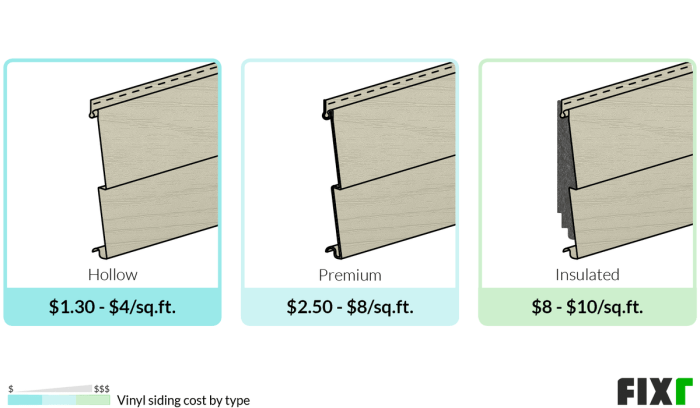
Choosing the right vinyl siding significantly impacts both the upfront cost and the long-term durability of your home’s exterior. Understanding the nuances of material selection is crucial for making an informed and budget-friendly decision. This section delves into the factors influencing vinyl siding material pricing, helping you navigate the options and make the best choice for your project.
Vinyl Siding Thickness and Durability
Vinyl siding thickness is directly correlated with its cost and durability. Thicker siding, typically measured in mils (thousandths of an inch), generally offers superior resistance to impact damage, warping, and fading. A thicker profile, for example, a 40-mil siding compared to a 20-mil option, will often withstand hailstorms and accidental impacts more effectively, resulting in lower maintenance costs over the siding’s lifespan. While the initial cost of thicker siding is higher per square foot, the long-term savings from reduced repairs and replacements can be substantial. For instance, a homeowner in a hail-prone region might find the investment in 40-mil siding worthwhile despite the increased upfront expense.
Premium vs. Standard Vinyl Siding Features
Premium vinyl siding distinguishes itself from standard options through several key features that justify its higher price point. These include enhanced color retention, improved impact resistance (often exceeding industry standards), and more realistic wood-grain textures or other detailed embossments. Premium options frequently incorporate technologies designed to prevent fading and cracking, extending the siding’s lifespan considerably. For example, some premium brands offer warranties significantly longer than those provided for standard siding. This longer warranty reflects the increased durability and the manufacturer’s confidence in the product’s longevity. The higher price reflects the investment in these advanced materials and manufacturing processes.
Vinyl Siding Color and Finish Cost Variations
The cost per square foot of vinyl siding can vary based on color and finish. Solid colors are generally less expensive than those with wood grain or other textured finishes. Certain colors, particularly those requiring specialized pigments, may also command a premium. For example, deep, rich colors often require more pigment, thus increasing the manufacturing cost and ultimately, the price to the consumer. Similarly, highly textured finishes require more complex manufacturing processes, contributing to a higher price tag compared to smoother, simpler finishes. A homeowner choosing a dark color with a wood-grain texture should anticipate a higher cost per square foot than someone opting for a lighter solid color.
Calculating Total Material Cost
Calculating the total material cost for vinyl siding involves a straightforward process. First, accurately measure the square footage of the area to be sided. Next, determine the cost per square foot of the chosen siding material, factoring in color and finish. Finally, multiply the square footage by the cost per square foot to arrive at the total material cost.
Total Material Cost = Square Footage x Cost Per Square Foot
For instance, if you need to side 500 square feet and your chosen material costs $5 per square foot, the total material cost would be $2500. Remember to add sales tax and any applicable delivery fees to obtain the final cost.
Labor Costs and Contractor Selection: Vinyl Siding Cost Per Square
Choosing the right contractor significantly impacts your vinyl siding project’s overall cost and success. Labor represents a substantial portion of the total expense, and a skilled, reputable installer ensures a quality finish and longevity. Understanding labor costs and the contractor selection process is crucial for a smooth and cost-effective renovation.
Several factors influence the hourly or per-square-foot labor rates charged by vinyl siding installers. These include regional variations in the cost of living and skilled labor, the complexity of the job (e.g., intricate trim work, removal of existing siding), the installer’s experience and reputation, and the prevailing market rates. Highly experienced and in-demand installers often command higher rates. Similarly, projects requiring extensive preparation or specialized techniques will naturally incur higher labor costs.
Labor Cost Variations Across Geographic Locations
Labor costs for vinyl siding installation vary significantly depending on location. High-cost areas like New York City, San Francisco, or Boston typically have higher labor rates than those in smaller towns or rural areas. For example, a reasonable labor cost in a high-cost area might range from $5 to $10 per square foot, while in a lower-cost area, it could be between $3 and $7 per square foot. These are estimates and actual costs can fluctuate based on the factors mentioned earlier. It’s advisable to obtain multiple quotes from local contractors to get a better understanding of prevailing rates in your specific region. Always remember that a lower price doesn’t automatically equate to a better deal; consider the contractor’s experience and reputation as equally important factors.
Finding Reputable and Experienced Vinyl Siding Contractors
Finding a reliable contractor involves thorough research and due diligence. Start by asking for recommendations from friends, family, or neighbors who have recently had similar work done. Online resources like the Better Business Bureau (BBB) and review websites can provide valuable insights into a contractor’s reputation and past performance. Checking online portfolios and websites will showcase completed projects and the contractor’s style. Directly contacting several contractors to request detailed quotes and references is crucial. Ensure the contractors are properly licensed and insured to protect yourself from potential liabilities.
Contractor Evaluation Checklist
Before committing to a contractor, use this checklist to assess their qualifications and protect your investment:
This checklist ensures you’re selecting a contractor who meets your needs and provides the necessary protections.
- Verify their state contractor’s license and insurance coverage.
- Request and review references from previous clients.
- Obtain at least three detailed written estimates outlining materials, labor, and a project timeline.
- Clarify the warranty offered on both materials and workmanship.
- Confirm their understanding of building codes and permits.
- Inquire about their experience with similar projects.
- Discuss their payment schedule and dispute resolution process.
- Check for any liens or unresolved complaints filed against the contractor.
Visual Examples of Vinyl Siding Projects
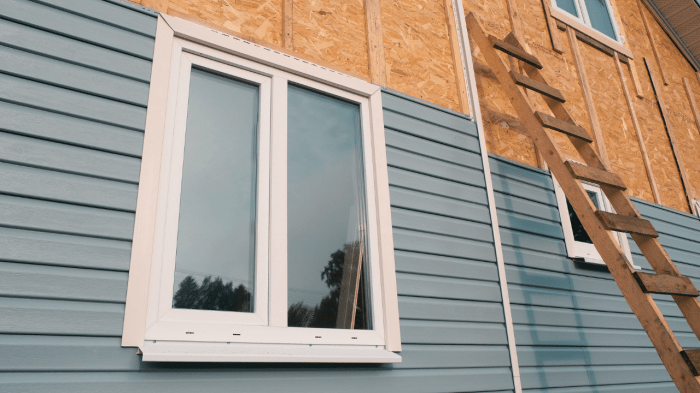
Seeing is believing, and when it comes to vinyl siding, visualizing different projects helps solidify your understanding of cost variations. The following examples illustrate how project size, complexity, and material choices directly impact the final price. Remember that these are estimates, and actual costs can fluctuate based on regional factors and specific contractor pricing.
Large, Complex Victorian Home with Vinyl Siding
This project involved a large two-story Victorian home with intricate architectural details. The siding installation required specialized trim pieces to match the home’s unique design, including corner boards, J-channel, and decorative molding around windows and doors. Multiple colors of vinyl siding were used to accentuate the different architectural elements. The labor involved extensive cutting, fitting, and precise installation to maintain the home’s historical character. The materials, including premium vinyl siding with a textured finish, specialized trim pieces, and fasteners, cost approximately $15,000. Labor costs, due to the complexity and time required, reached $12,000. The total project cost was approximately $27,000. The final appearance was stunning, showcasing the Victorian architecture with crisp lines and rich color contrasts.
Simple Ranch-Style Home Vinyl Siding Installation
This project involved a single-story ranch home with a straightforward design. The installation used a standard white vinyl siding with minimal trim. The process was relatively straightforward, requiring less intricate cuts and fitting. The materials, including basic white vinyl siding and standard trim, cost approximately $5,000. Labor costs were significantly lower due to the simpler design and quicker installation time, amounting to approximately $3,000. The total project cost was around $8,000. The final appearance was clean, modern, and efficient, reflecting the home’s simple design.
Mid-Sized Colonial Home with Vinyl Siding and Stone Accents
This project featured a mid-sized two-story Colonial home. The homeowner opted for a combination of vinyl siding and manufactured stone veneer accents around the base of the home and near the entryway. This added a level of complexity to the installation, requiring careful coordination between the siding and stone installers. The vinyl siding chosen was a medium-toned gray with a wood-grain texture. The materials, including the vinyl siding, stone veneer, and necessary trim, cost approximately $10,000. Labor costs, reflecting the increased complexity of combining two different materials, were approximately $7,000. The total project cost was around $17,000. The final appearance showcased a sophisticated blend of modern vinyl siding and classic stone accents, enhancing the home’s curb appeal.
Complex Design Vinyl Siding Installation: Material and Cost Impact
A complex vinyl siding design, such as that seen on a Victorian home or a home with numerous gables and dormers, utilizes a variety of trim and accessories. This includes, but is not limited to, different types of corner boards, J-channel, window and door trim, soffit and fascia, and possibly even decorative accents like shutters or trim boards with intricate designs. The increased number of pieces and the precision required for installation significantly impact the overall cost. The use of multiple colors or textures of vinyl siding further adds to both the material and labor expenses. For instance, a home with elaborate trim work might see a 30-50% increase in material costs compared to a simpler design. Labor costs are similarly affected, potentially doubling or even tripling the time required for installation, leading to a substantial increase in the final price.
Simple Single-Story Home Vinyl Siding Installation: Minimal Cost
A simple single-story home, characterized by a straightforward design with minimal architectural details, requires less material and labor. The installation often involves standard white or neutral-colored vinyl siding with basic trim pieces. The lack of intricate cuts, multiple colors, or complex features significantly reduces both material and labor costs. The simplicity translates directly to a lower overall price, making it a cost-effective option for homeowners seeking a basic yet functional siding upgrade. The straightforward installation process can be completed quickly, further contributing to lower labor costs.
Ultimately, the cost of vinyl siding per square foot is a multifaceted equation. While the base material price provides a starting point, labor, regional variations, and the complexity of your project significantly influence the final bill. By carefully considering the factors discussed—material quality, labor rates, design complexity, and potential hidden costs—you can develop a realistic budget and confidently select a contractor who delivers both quality and value. Remember, thorough planning and informed decision-making are key to a successful and cost-effective vinyl siding installation.
FAQ Overview
What is the average lifespan of vinyl siding?
With proper installation and maintenance, vinyl siding can last 20-50 years or more.
Can I install vinyl siding myself?
While possible, professional installation is highly recommended for optimal results and warranty coverage. DIY attempts can lead to costly mistakes.
Does vinyl siding increase home value?
Yes, generally. High-quality vinyl siding enhances curb appeal and protects your home, often adding value at resale.
How do I find a reputable contractor?
Check online reviews, request multiple bids, verify licenses and insurance, and ask for references.
What about warranties on vinyl siding?
Manufacturers offer warranties on their products, while contractors may offer additional labor warranties. Carefully review these before signing any contracts.





